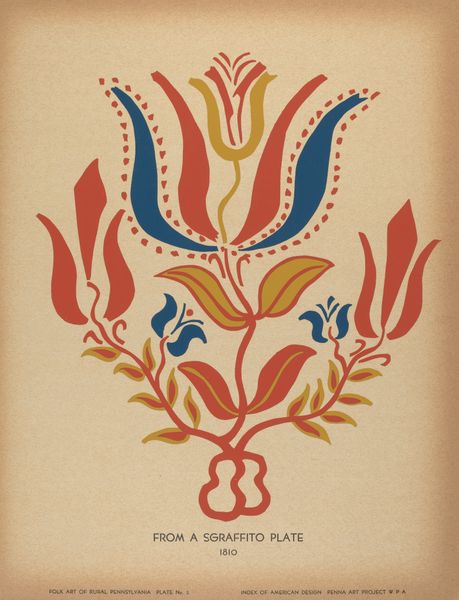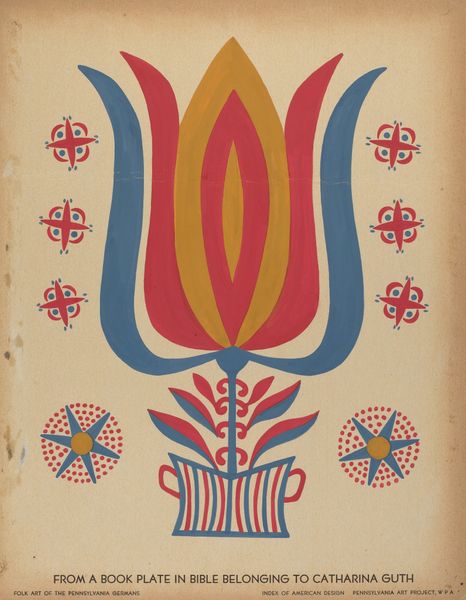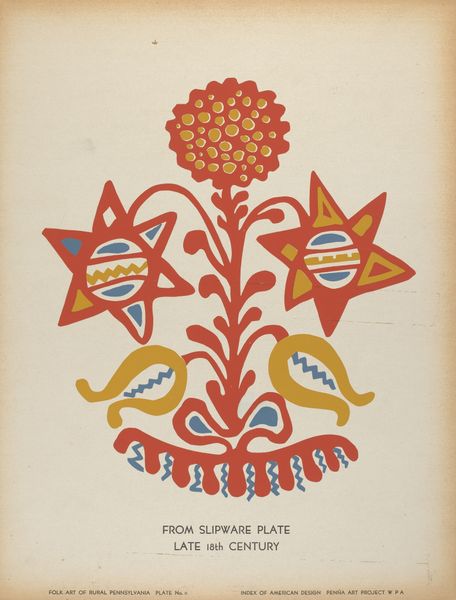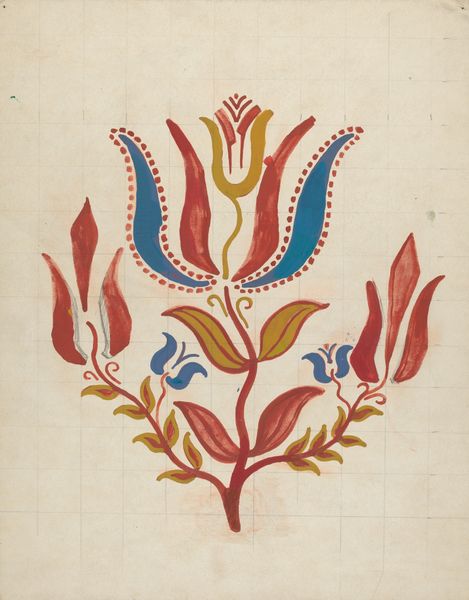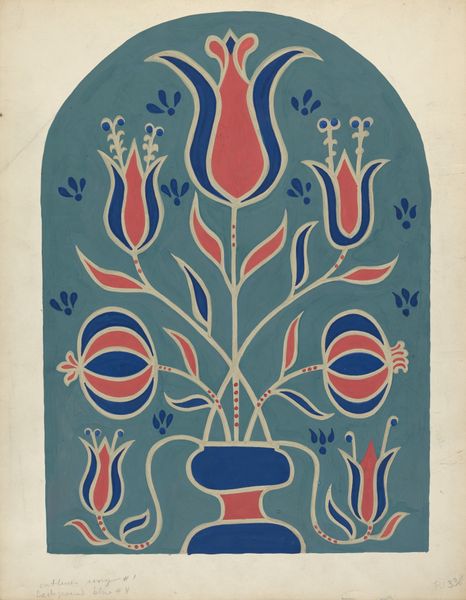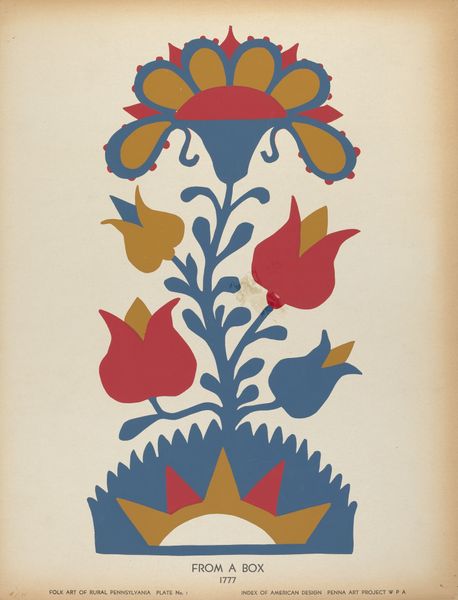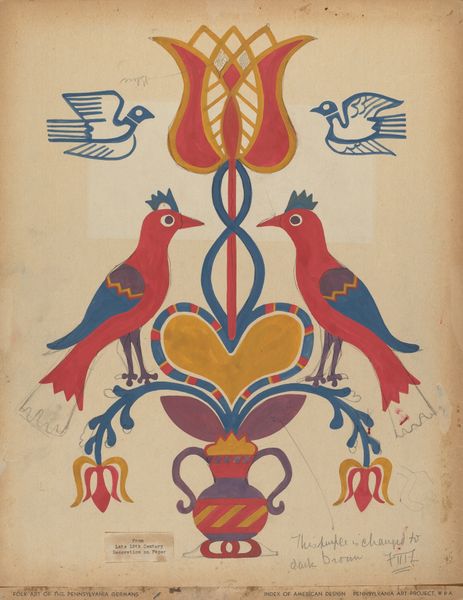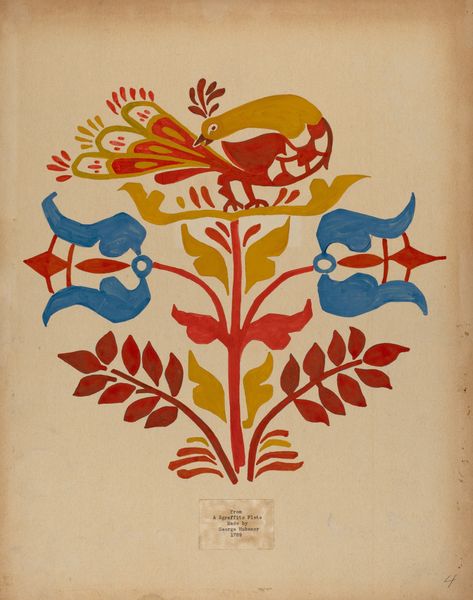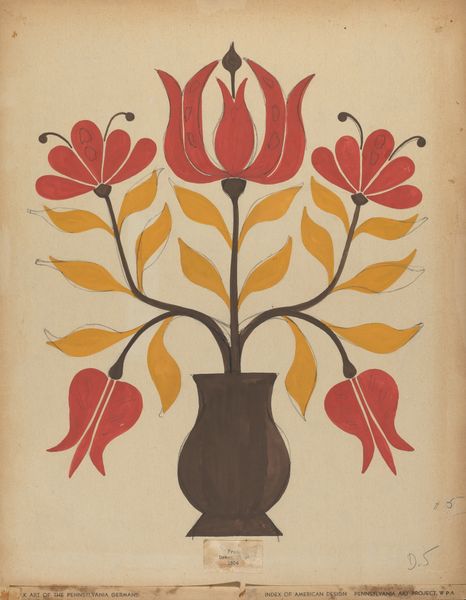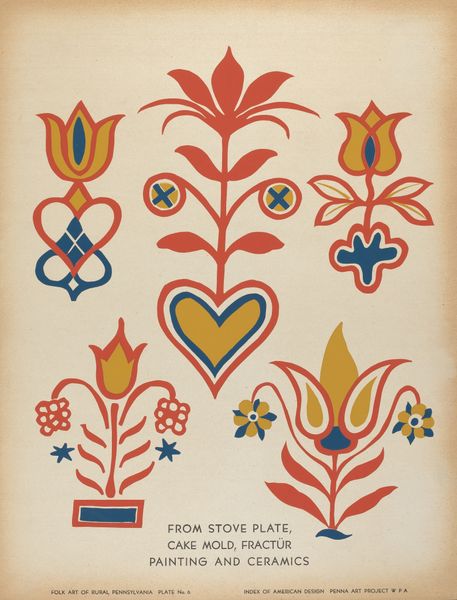
Drawing for Plate 2: From Portfolio "Folk Art of Rural Pennsylvania" c. 1939
0:00
0:00
drawing, paper, watercolor
#
drawing
#
paper
#
watercolor
#
folk-art
#
geometric
#
watercolour illustration
Dimensions: overall: 46 x 35.6 cm (18 1/8 x 14 in.)
Copyright: National Gallery of Art: CC0 1.0
Curator: Looking at this artwork, the colors immediately grab you, don’t they? The use of bold primary colors and shapes creates an image that is simultaneously vibrant and direct. Editor: Absolutely, it feels declarative. And considering its context, it’s particularly striking. This watercolor drawing is titled "Drawing for Plate 2: From Portfolio 'Folk Art of Rural Pennsylvania,'" created around 1939. It offers us a fascinating glimpse into the world of Pennsylvania folk art. Curator: It makes me think about cultural preservation and representation. Why was this artist drawn to document this particular folk art? Who was the intended audience, and what narratives about rural Pennsylvania were being constructed through this project? Was it trying to hold onto something? Editor: I think you’re on to something. During that period, there was a growing interest in preserving and celebrating American folk traditions, partly as a way to define a national identity during times of rapid social and economic change. Artists and institutions played a role in shaping how those traditions were viewed and understood. But who decides what is worthy of preserving and how? This piece comes from that era and invites a consideration of those institutional power dynamics. Curator: And look at the tulip motif! While superficially appearing as just another flower, the symbolic depth within Pennsylvania German folk art reveals that they often functioned as a religious symbol. That opens all kinds of pathways into ideas about immigration and faith in a new country. Editor: The tulip does dominate the visual space and offers a potent insight into the values placed on simple motifs and how they operate as a type of visual language. The bright palette of reds, blues, and yellows enhances that accessibility too. The overall presentation moves folk art out of domestic spaces and inserts it into dialogues around design and cultural identity on a grander stage. Curator: Thinking about contemporary art today, it serves as a great reminder that art making often emerges from a sense of collective identity, both reflecting it and shaping it through ongoing artistic exchanges. Editor: It does underscore that these investigations of rural culture and folk practices involved active interpretation. Understanding these choices enables us to see past the surface into something far more layered about the American experience at that time.
Comments
No comments
Be the first to comment and join the conversation on the ultimate creative platform.
